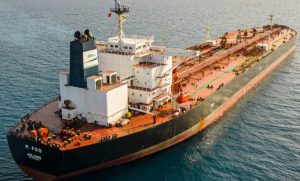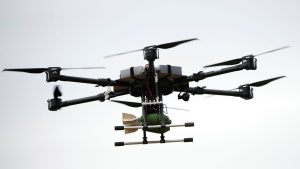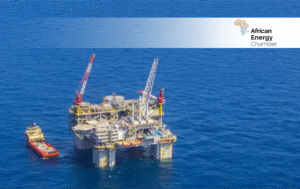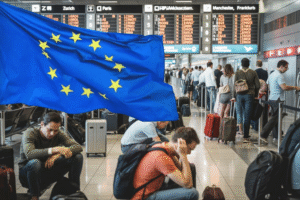Russia’s Drone ‘Mothership’ Sparks Alarm Across Europe
How an ageing shadow-fleet tanker became a symbol of Moscow’s hybrid war. A rusting oil tanker seized by French authorities this week is at the centre of a storm linking Russia’s shadow fleet to a series of disruptive drone attacks on European airports and infrastructure.


The ship, Boracay, left Russia on September 20 and sailed through the Baltic Sea just as a wave of unexplained drone incursions hit Europe. Over nine separate incidents, swarms of unmanned aerial vehicles forced airport closures, spied on power plants, and raised fears of a new dimension to Moscow’s hybrid warfare.
A print-media investigation using MarineTraffic tracking data suggests that the tanker was in the vicinity of every major drone incident. On September 22, when drone activity brought Copenhagen airport to a standstill, Boracay was within 50 nautical miles of Denmark’s capital. Days later, as the vessel traced Denmark’s northern coastline, four more airports reported drone sightings.
On September 25, German authorities reported drones surveilling a power plant, shipyard, canal, hospital, and parliament in Kiel. Data shows the tanker was at that time positioned off Germany’s North Sea coast. By the end of the month, the ship had passed through the English Channel and into French waters, where authorities boarded and detained it near Brest. President Vladimir Putin swiftly condemned the raid, accusing France of “piracy.”
The Boracay’s suspected role marks the first known case of a shadow-fleet ship being used not just to bypass Western sanctions but to actively disrupt European societies.
Traditionally, the shadow fleet’s purpose has been economic, a smuggling sanctioned Russian oil to finance the Kremlin’s war in Ukraine. These ships, often renamed and reflagged under dubious registries, operate with little oversight. Boracay, originally built in 2007 as Pacific Apollo, has cycled through at least six names and a carousel of fraudulent flags from Benin, Gambia and Malawi.
Registered to Baaj Shipping Limited, a Seychelles-based shell company, the vessel was last inspected in Estonia this spring, where inspectors found 40 deficiencies. Safety and radio certificates were deemed invalid, raising alarms not only about sanctions breaches but also about the potential for environmental disaster.
“The insurance is particularly what everyone is worried about”. If there’s a pollution incident involving one of these Russian tankers, who pays? Who’s accountable?” – Peter Aylott, head of policy at the UK Chamber of Shipping.
Western leaders are increasingly framing these incidents as part of Moscow’s hybrid war strategy, where economic, cyber, and unconventional military tactics blur together. Ukrainian President Volodymyr Zelensky was the first to publicly allege that Russia was using shadow-fleet vessels as floating drone bases.
In view of European citizens, the attacks are not mere military provocations but a direct disruption of daily life. Airport closures have stranded travellers, drone sightings have rattled energy workers, and the idea that anonymous ships can launch surveillance or sabotage missions just offshore has unsettled coastal communities.
France’s seizure of Boracay has now become a diplomatic flashpoint. While Paris insists the detention was lawful, Moscow has doubled down on accusations of Western aggression. With NATO forces stepping up patrols in the North Sea and Baltic, and insurers warning of catastrophic risks from uninsured Russian tankers, the incident highlights how a single decrepit ship can carry geopolitical, economic, and social consequences far beyond its rusting hull.
Europeans feel Boracay is not an ordinary oil tanker. To them, its mostlikely a symbol of how Russia’s hybrid war is shifting from the battlefield in Ukraine to the heart of European society, showing that Russia can reach into Europe’s critical infrastructure whenever it chooses.








